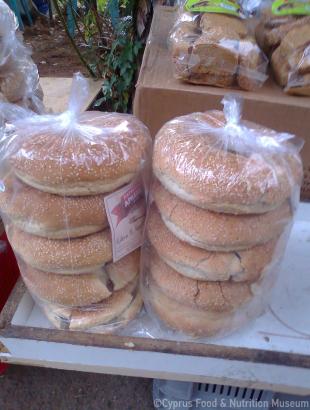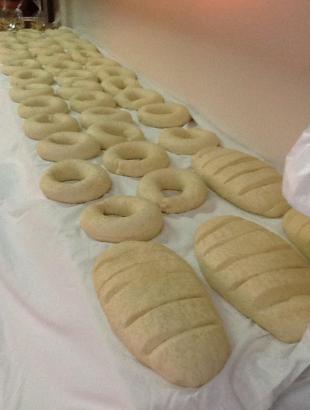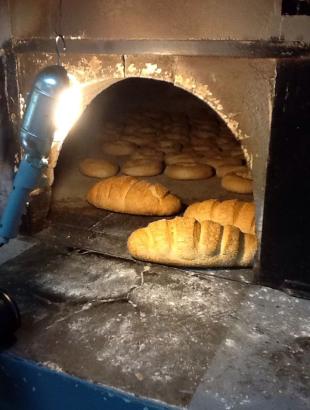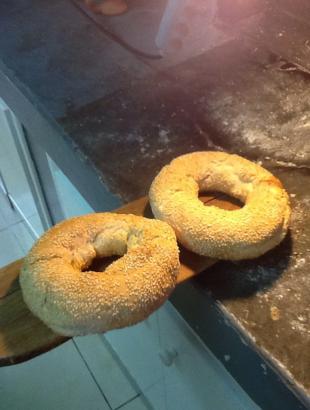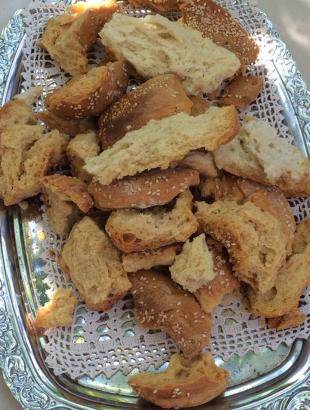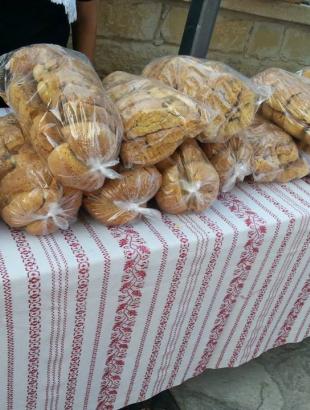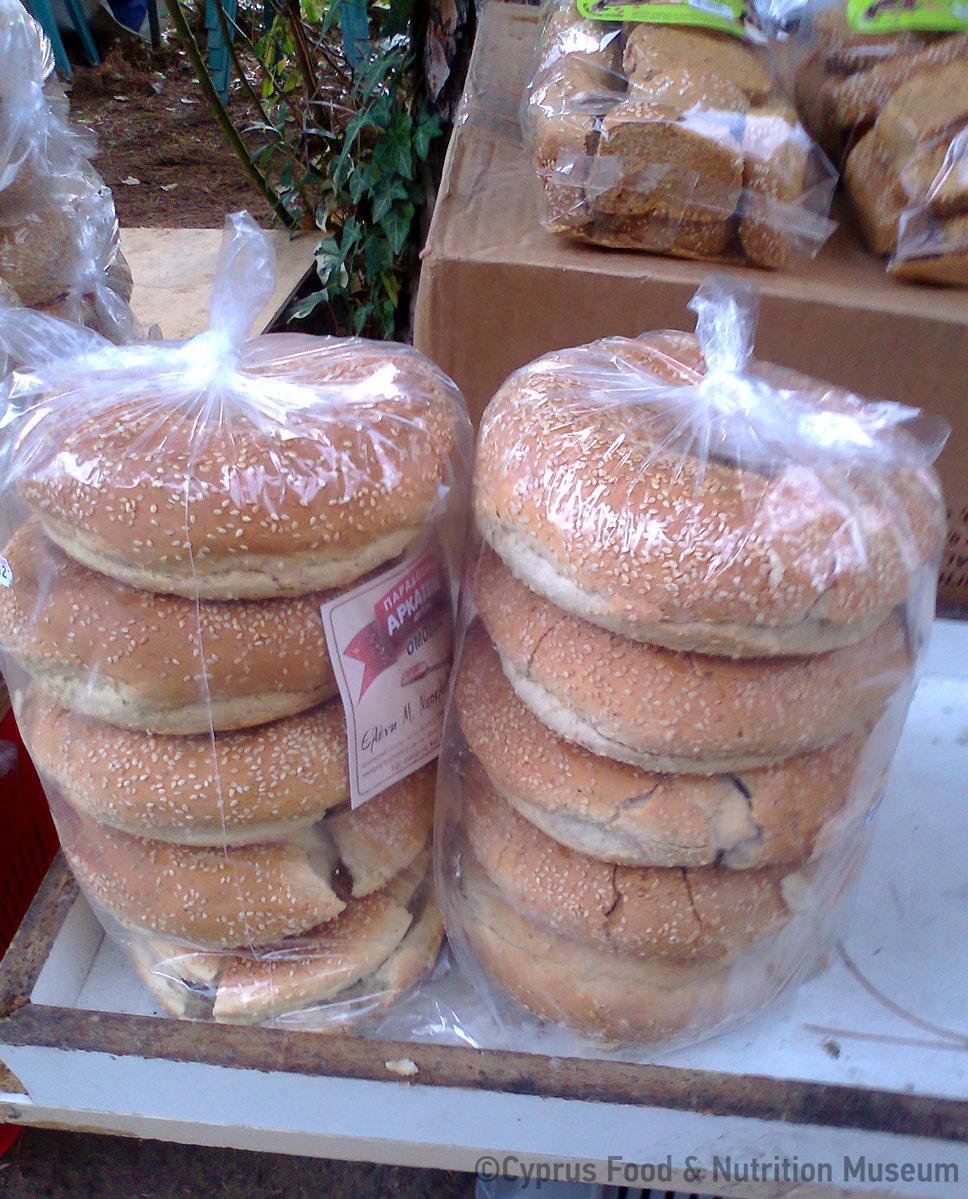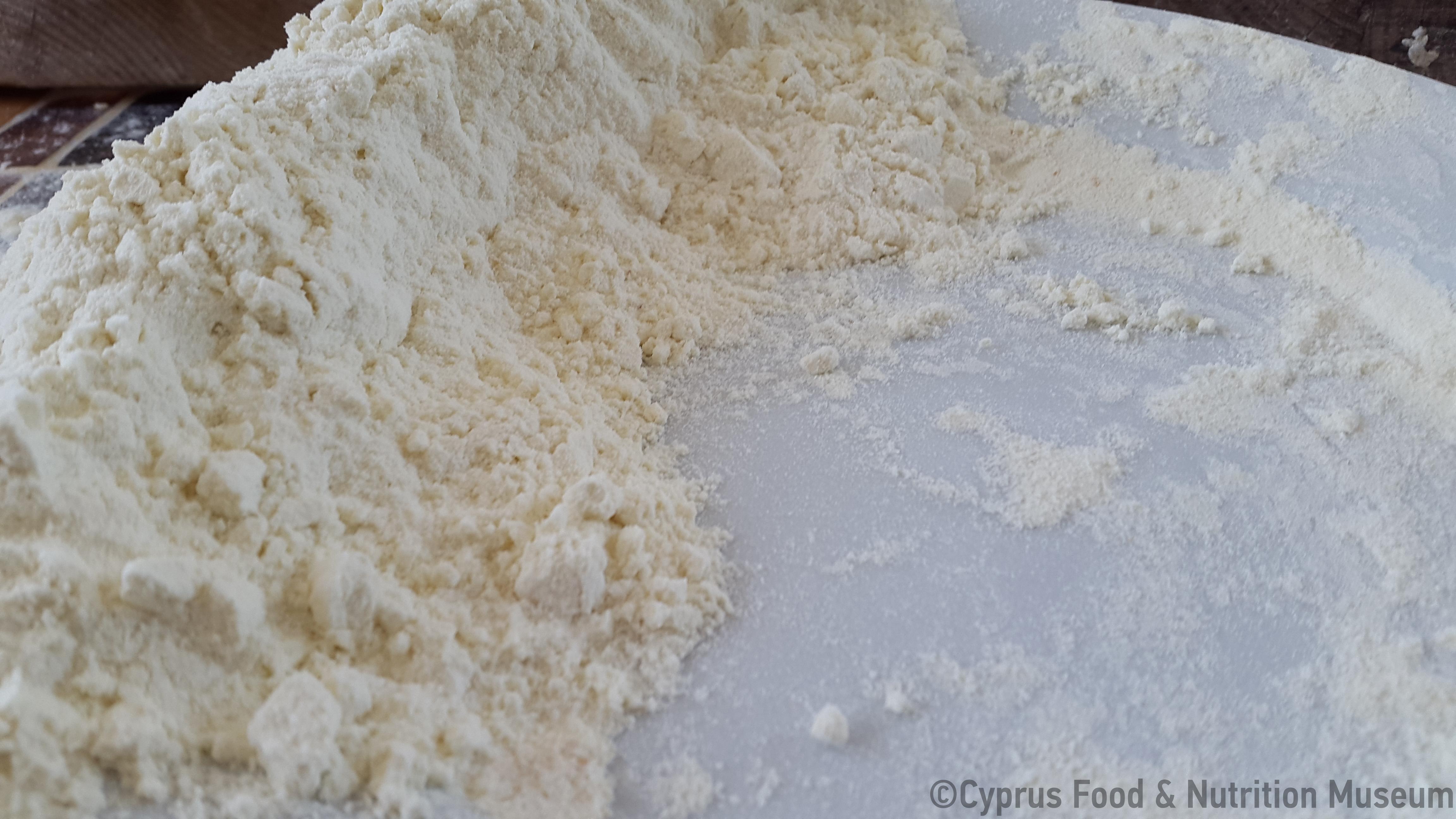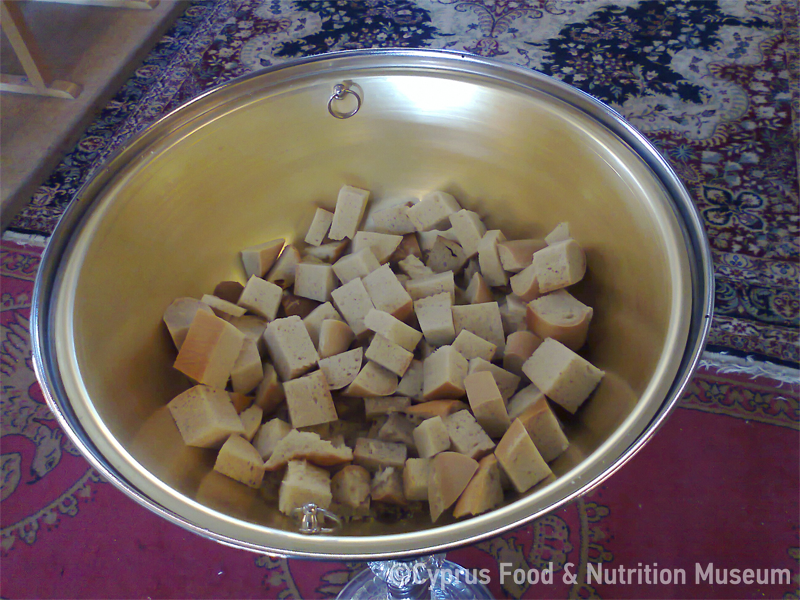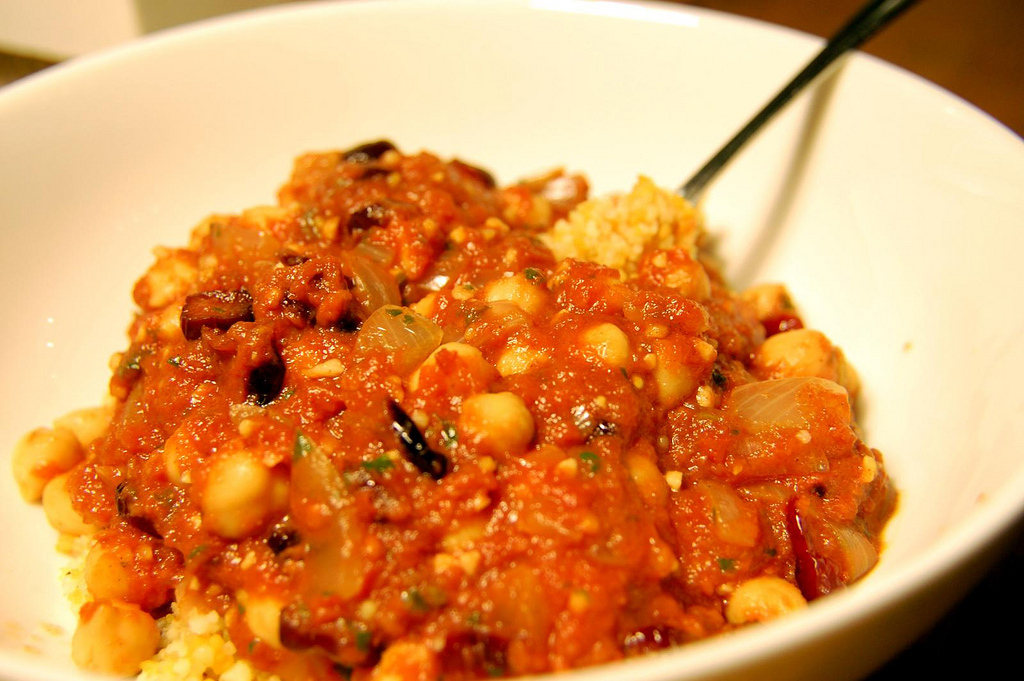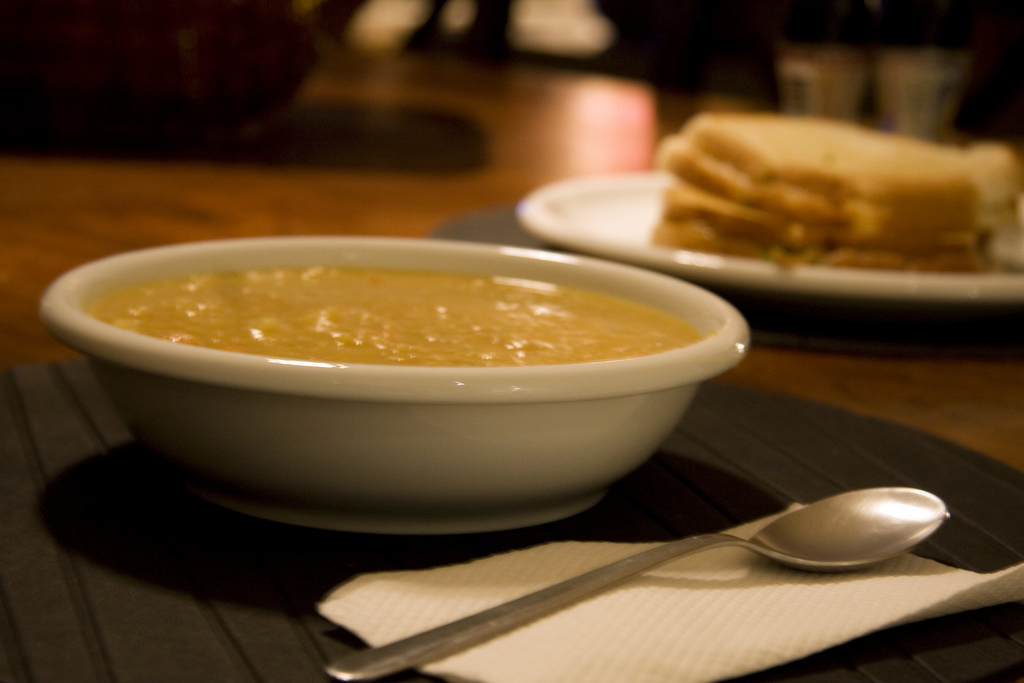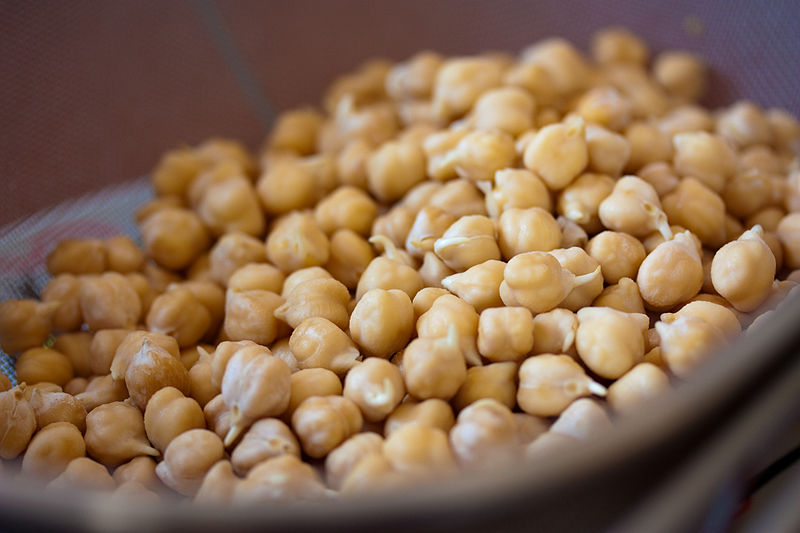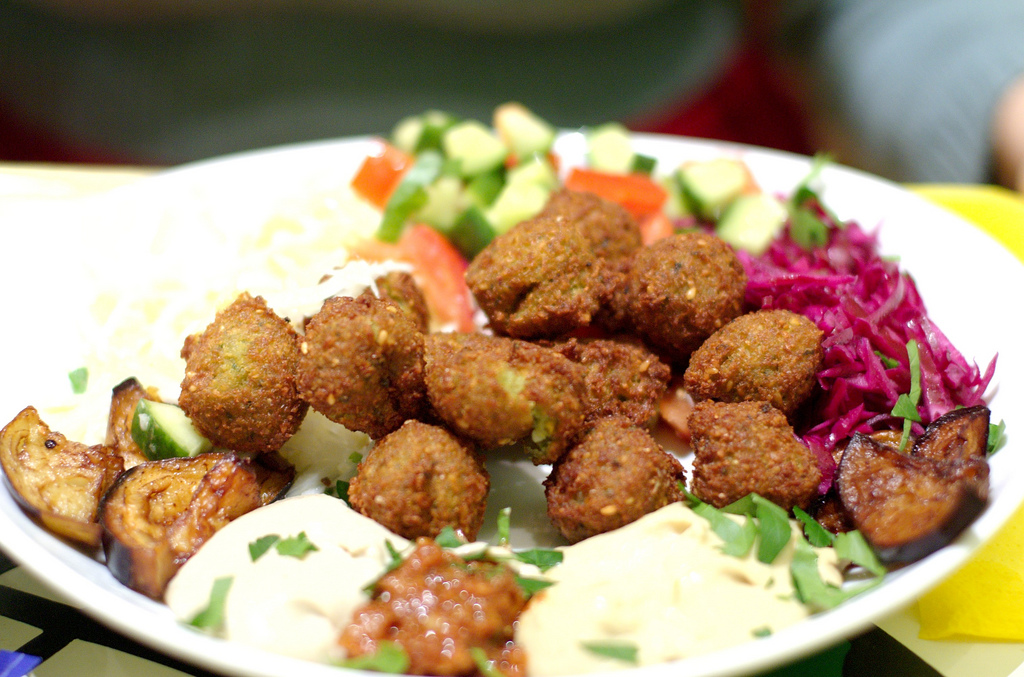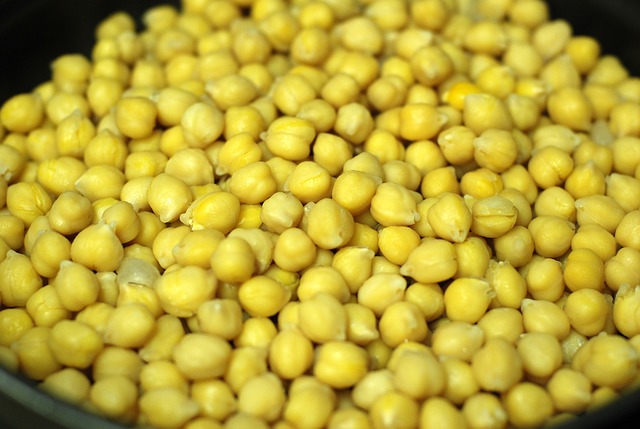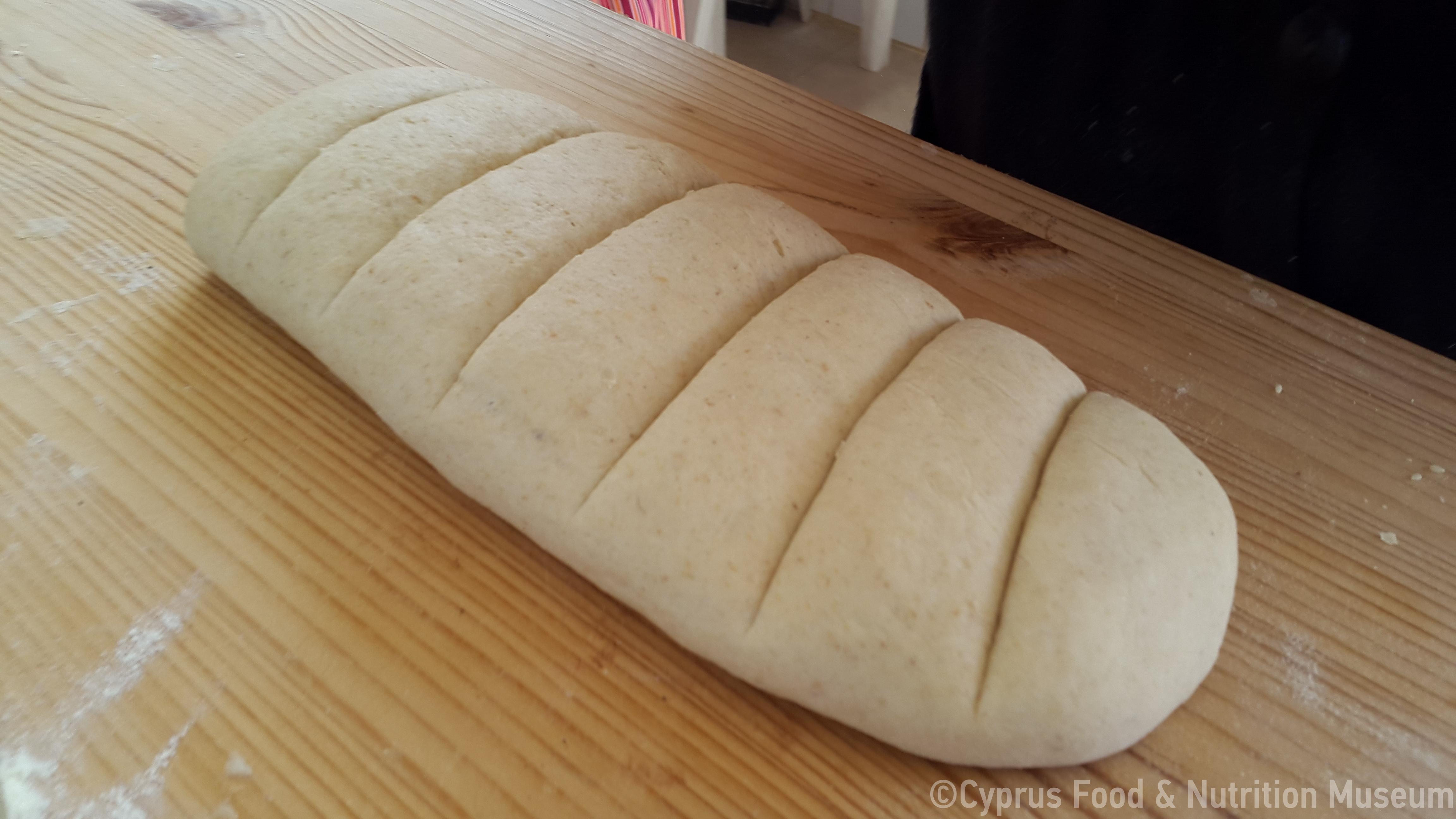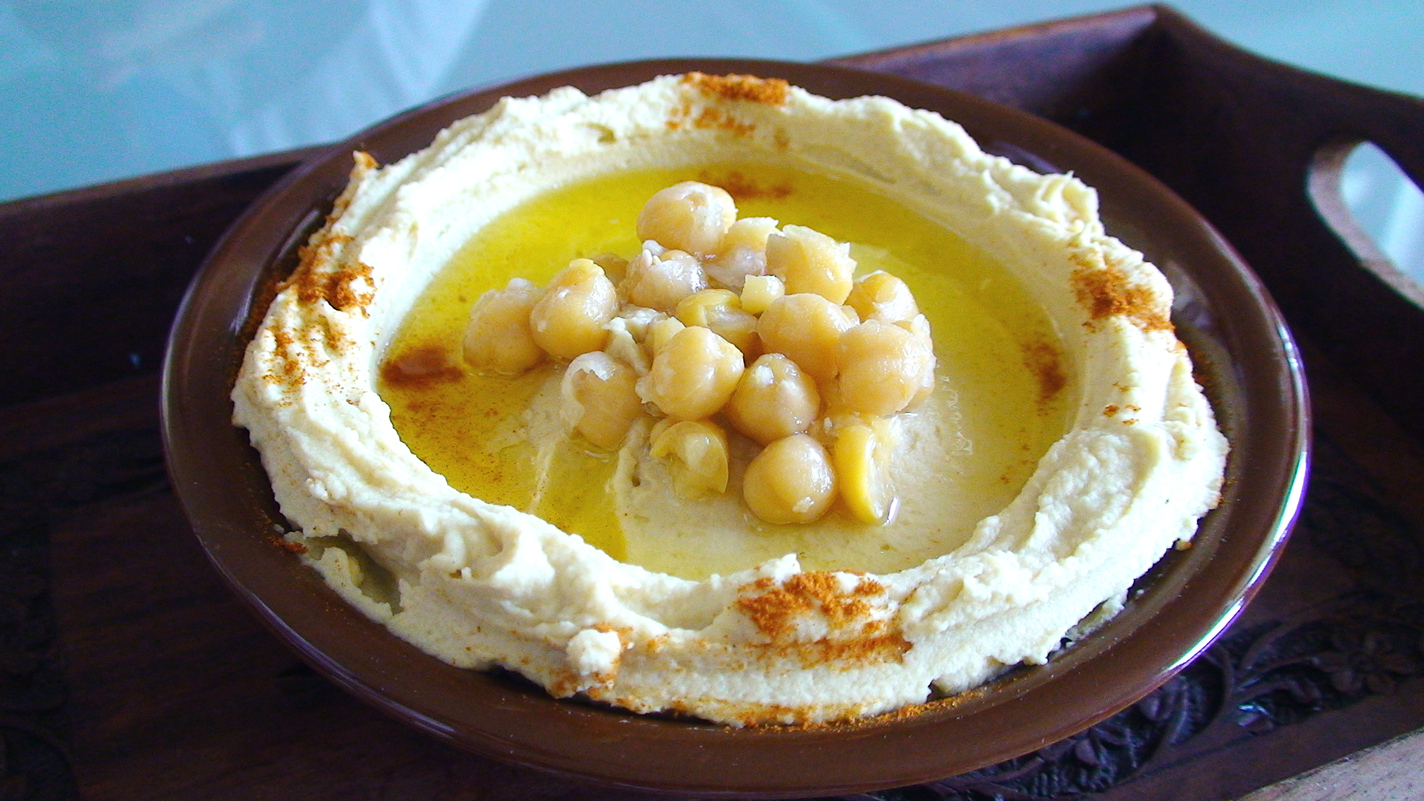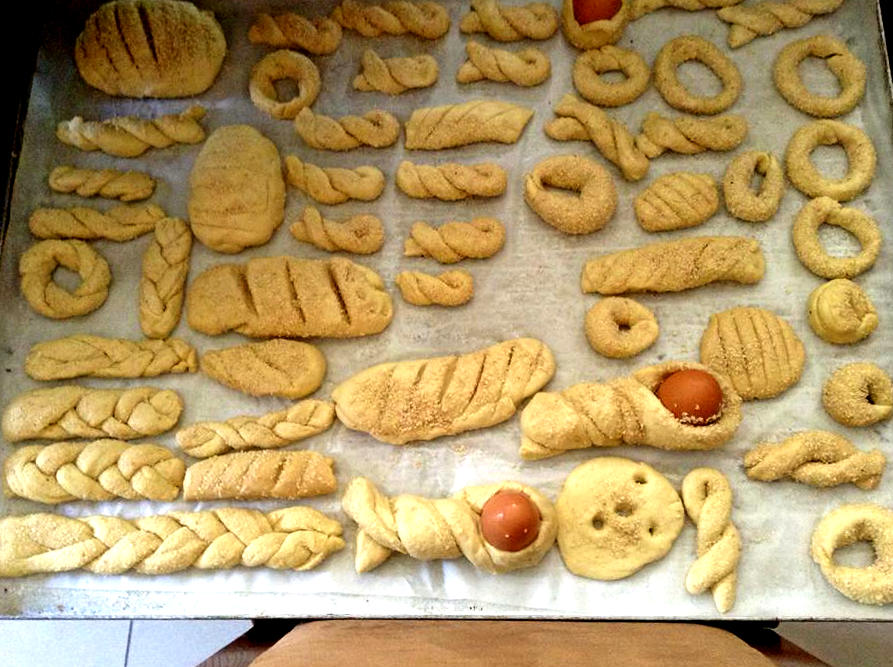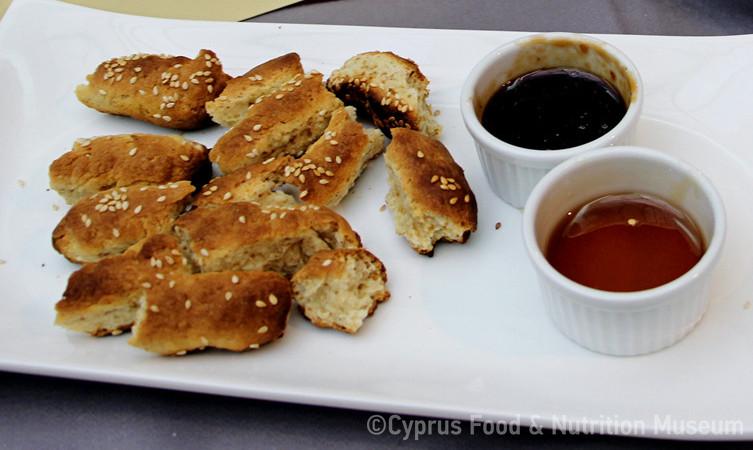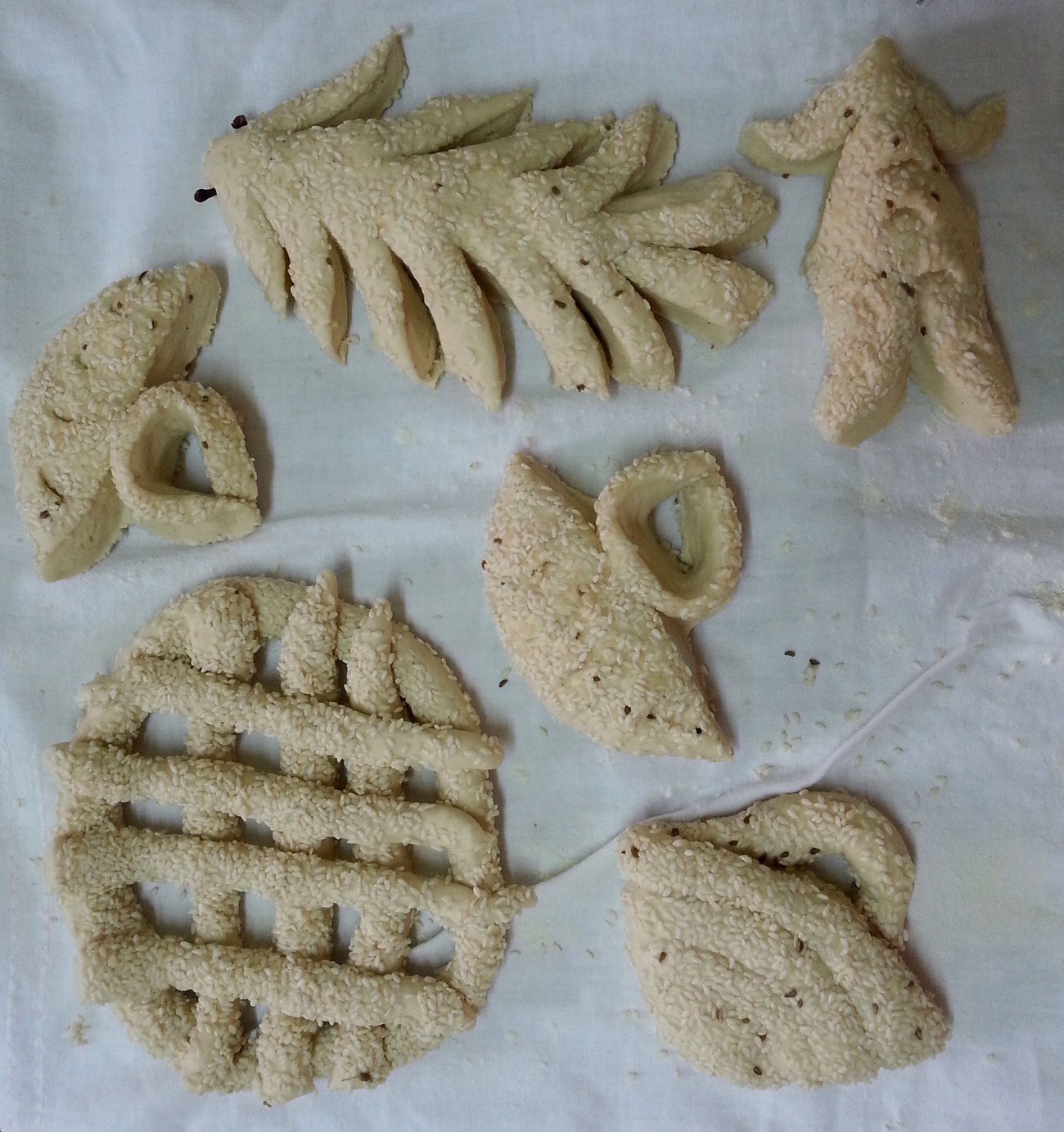A traditional sourdough Cypriot bread (and rusks) made using chickpea foam (aquafaba), which requires a lengthy process with many stages.
Name - Origin
Εφτάζυμα.
Arkatena correspond to ‘εφτάζυμα - eftazyma’ found in other regions of Hellenism, such as in Asia Minor, the Dodecanese and Trikala (Kypri - Protopapa 2003, 284).
A special kind of bread and crisp bread/rusks, kneaded with a sourdough starter which is made using chickpea foam (aquafaba). Arkatena are found in villages in the Limassol and Paphos districts.
Bread or rusks made with "arkatis", a foam from soaked chickpeas (Petrou-Poeitou 2013, entry Arkatena, 27).
A type of bread made overnight with sourdough starter made from chickpea extract (Yangoullis 2009, entry αρκατένον,το, 75).
Arkatena are a type of bread made with sourdough starter from chickpea foam produced through fermentation of chickpeas ('arkatis'). They are mainly produced in the villages of Omodos and Koilani in the Limassol district (Ministry of Agriculture 2011, entry 15 - Arkatena Omodos).
Georgios Loukas in his Glossary states that 'arkatis' is an aromatic dough used to make crispy bread: 'the arkatis' rusks are fuzzy and fragrant' (Kypri 1979 [2002²], entry αρκάτης,ο, 62).
The name 'arkateno' is probably derived from the word 'arkatis - worker', because of the lengthy process of making the sourdough starter which would take a whole night (Ionas 2001 208-210, Ministry of Agriculture 2011, Petrou-Poietou 2013, entry Αρκατένα, 27).
'Arkatis' is the name given to the sourdough starter used for the arkatena bread (Pilavakis 1968, 143), the foam from soaked chickpeas serves as a leavening agent in the kneading process (Petrou-Poietou 2013, entry Αρκατένα, 27).
The phrase "This one is like koulouri arkateno" is said about people who are victims of exploitation (Petrou-Poeitou 2013, 27).
The arkatis, i.e. the sourdough starter used for the arkatena, is made from chickpea foam. In order for arkatis to be successful, the chickpeas must be well cooked, so they are tasted before they are used. The chickpeas are kept overnight in boiling water, at a constant temperature, and the foam is then used to make arkatis.
Arkatis is a different sourdough starter than normal starter in that it is not stored, so bread must be kneaded on the same day.
When women would prepare this sourdough starter, they would go around the village or surrounding villages and exchange it for flour. They would get a plate of flour for a spoonful of starter.
The arkatena were either made in the shape of large buns, or in the shape of koumouliés or mizánes, that is, oblong shaped bread that is scored into slices, or small-sized bread. (Kypri - Protopapa 2003, 285-286).
Functional and symbolic role
Arkatena can be prepared either as bread (pannys̆i(d)eς - pannyhides = sesame bread offered in church) or as rusks (Ministry of Agriculture 2011, article 15 - Arkatena Omodos). Sometimes they would make bread and sometimes they would bake them for a whole day to make rusks. The rusks were stored for a long time (Ionas 2001, 208-210).
In the old times, the arkatena were always prepared around August 15 (Kypri - Protopapa 2003, 285-286).
During the wedding rituals, treating guests with arkatena was very common. They were small rusks that were offered as an accompaniment to drinks. They were made on Thursday and served on Friday when the bride would take her bath, on Saturday after “preparing the bed” and on Sunday after church. In villages where arkatena were made, on Saturday at the ‘sewing of the couple's bed’, the guests were served with arkatena (Protopapa 2005, Vol. A, 224 and 431).
In general, arkatena were offered during social visits, christenings and weddings (Ministry of Agriculture 2011, entry 15 - Arkatena Omodos).
Additional information and bibliography
It is mentioned that the technique of eftazyma was brought to Cyprus by Hadjistassou from Smyrni, who got married a Modite around 1860 (Great Encyclopedia of Cyprus, vol. 2, entry αρκατένα, 288).
Magda Ohnefalsch-Richter (1913) mentions in her travelogues about the arkatena: "At a certain place in the mountains they were baking the well-known 'arkatena' made with a mixture of cereals, broad beans and chickpea flour" (Ministry of Agriculture 2011, entry 15 - Arkatena Omodos).
The women who knew how to make the sourdough starter would not share their “secret” with others, so few women, mainly in the villages of Koilani and Omodos, knew how to make it (Kypri - Protopapa 2003, 285-286). They believed that if they shared their secret, the starter would lose its power. They would also grind the chickpeas in the opposite direction of the handmill. The starter also had to be prepared at midnight. All these reveal the attempt to infuse magical elements in the whole process of preparing the sourdough starter, in an effort to ensure its success. (Kypri - Protopapa 2003, 287).
See also: Arkatena bread and rusks in the Recipes section.
Yangoullis K. G. (2009), Thesaurus of the Cypriot Dialect. Interpretative, Etymological, Phraseological and Nomenclatural. Dictionary of the Medieval and Modern Cypriot Dialect, Library of Cypriot Folk Poets,70, Theopress Publications, Nicosia.
Ionas I. (2001), Τα παραδοσιακά επαγγέλματα της Κύπρου, Publications of the Centre for Scientific Research, XXXVII, Nicosia.
Kypri Th. D. (ed.) (1979 [2002²]), Materials for the compilation of a historical dictionary of the Cypriot dialect, Part A, Glossary of George Loukas, Publications of the Centre for Scientific Research, XLI, Nicosia.
Kypri Th. - Protopapa K. A. (2003), Traditional bread and parties in Cyprus. Their use and significance in customary life, Publications of the Centre for Scientific Research, XVIII, Nicosia, Nicosia.
Petrou-Poeitou E. (2013), Where do they come from. Words and stories from the world of taste, Epiphaniou Publications, Nicosia, Nicosia.
Pilavakis K. A. (1968), «Συμβολή στη μελέτη της φωνητικής του κυπριακού ιδιώματος», Cypriot Studies ΛΒ΄, 121-153.
Protopapa K. (2005), Έθιμα του παραδοσιακού γάμου στην Κύπρο, Vol. A-B, Publications of the Centre for Scientific Research, XLV, Nicosia.
Ministry of Agriculture, Natural Resources and Environment, Department of Agriculture (2011), Gastronomic Map of Cyprus, Press and Information Office, Nicosia.
Varvara Yiangou, Dimitra Demetriou, Tonia Ioakim, Ivi Michael, Kyriaki Panteli, Petroula Hadjittofi, Argyro Xenophontos.
